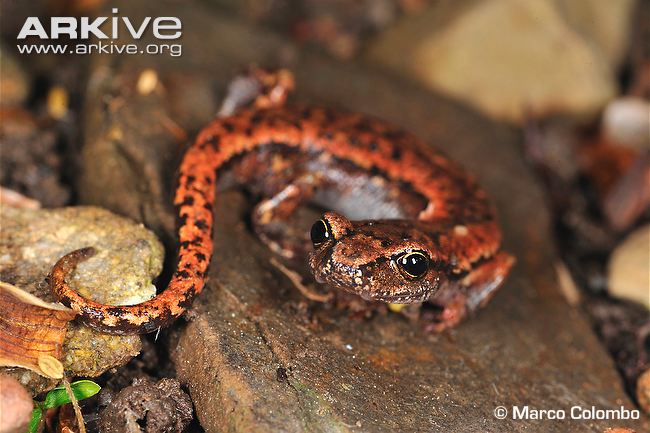What are some interesting facts about the North-west Italian Cave Salamander?
Did you know this species is classified as “near threatened”?

This photo is from
Wikipedia Commons.
According to the IUCN Red List for Threatened Species,
Speleomantes strinatii is categorized as near threatened. This
species is classified as near threatened due to probable declining
populations (IUCN Red List
of Threatened Species 2014). For more information
about why this species is near threatened, you can visit the
website, IUCN Red List
of Threatened Species.
 Who
discovered this species?
Who
discovered this species?
Aellen discovered the North-west Italian Cave Salamander in 1958
(Reptiles & amplibiens de France 2004).
Photographed by Marco Colombo from Arkive.org. This is a photo of a North-west Italian Cave Salamander.
What is one characteristic that separates this family from other
Salamandroidae families?
One characteristic that is only found in the family, Plethodontidae is a shallow groove called the nasolabial groove (Halliday and Adler 2002).
Did you know that these North Italian Cave Salamanders do not have the same number of digits on all of their appendages?
Speleomantes salamanders have four legs. Their front feet have 4 flat digits and their hind feet have 5 digits. This is common among the entire genus (Encyclopedia of Life 2014).
Did you know that female salamanders are usually larger than male salamanders?
Average male is about 96 mm and an average female is about 100 mm. This is due to the eating habits of both genders. Females eat larger prey in order to sustain developing embryos during pregnancy (iNaturalist.org 2014).
Are you interested in more information about this species or salamanders in general. Check out our references page which includes all of our sources used for this website.
Want to reread any information on this website? Visit our home page to start.
